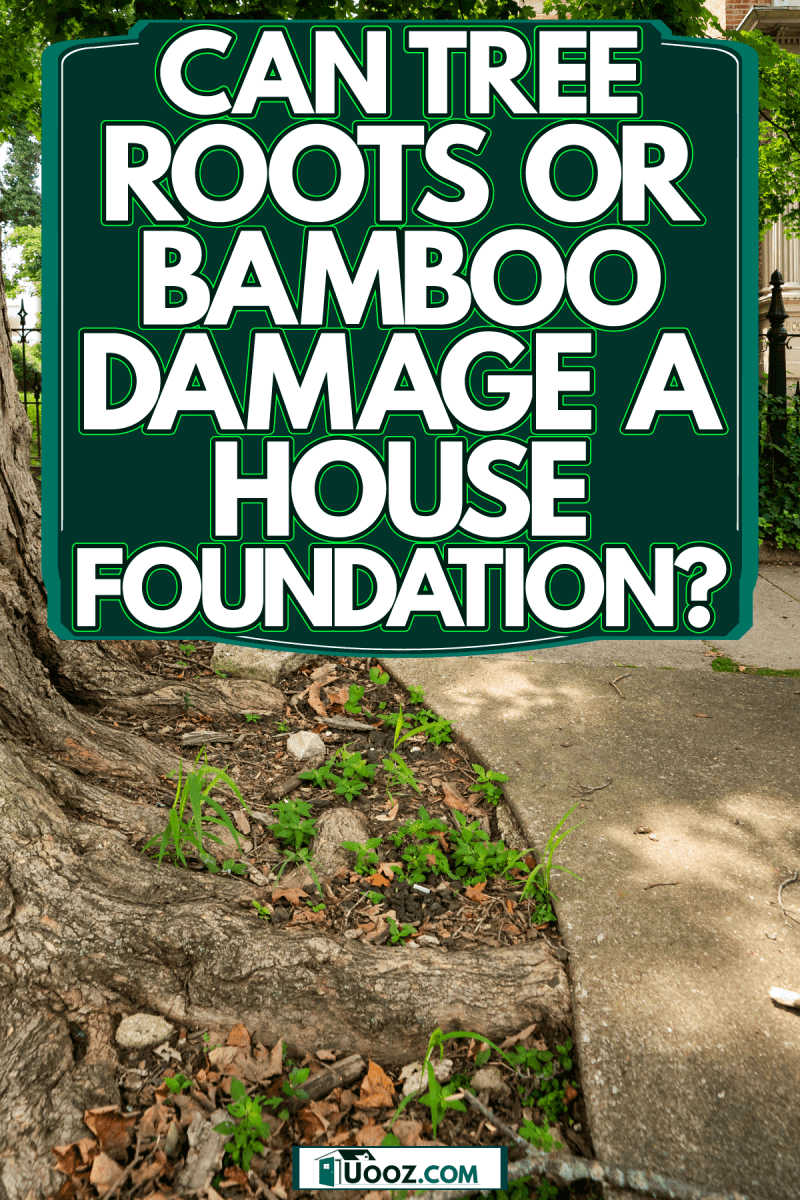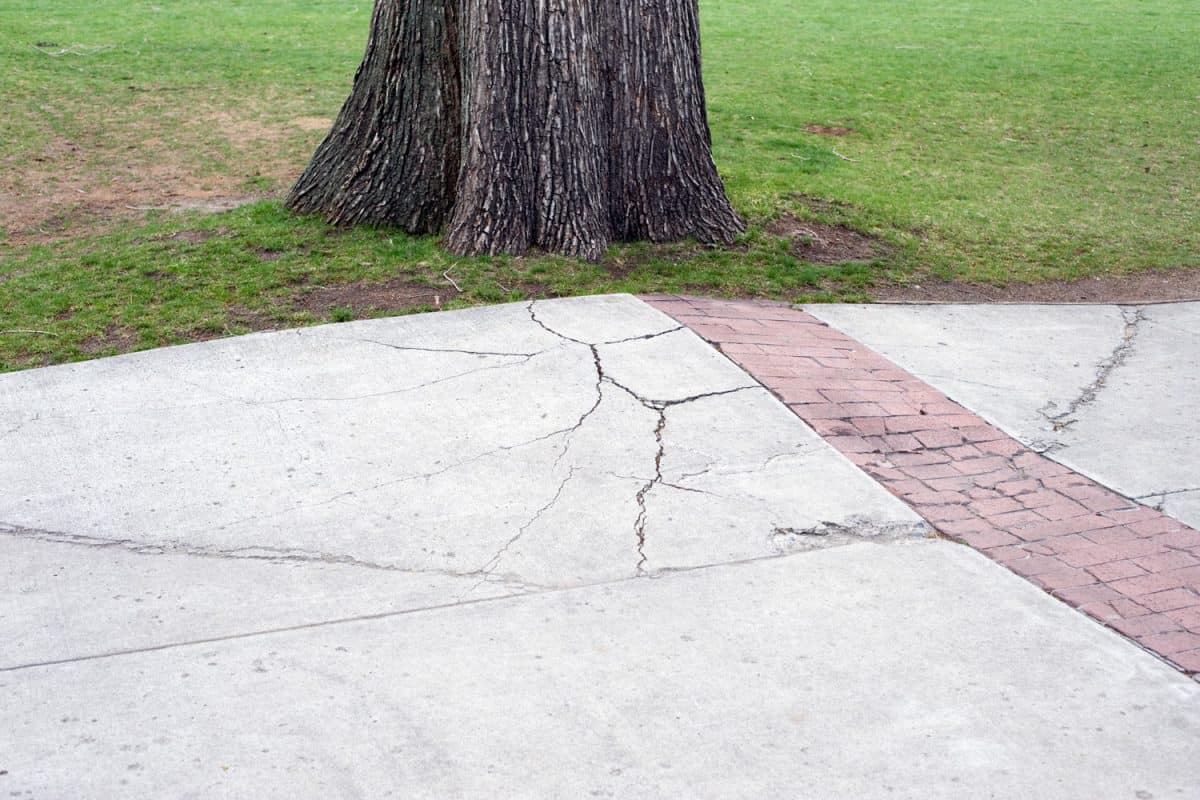Preventing damage to your home's foundation is probably one of the most important things you can do to preserve the structural integrity of your home. So, if you have large trees or a lot of bamboo near your home, you may be wondering if they can cause damage to the foundation of your home. Well, you've come to the right place. We've researched the topic and have an answer for you.
A tree's roots by itself are unlikely to damage a home's foundation, but in combination with other conditions, they can contribute to it. Changes in temperature and soil conditions are two factors that can play a part in roots damaging a home's foundation. Bamboo, on the other hand, can damage a house's foundation if they are able to grow and expand through any cracks that have formed.
Now you know that you don't have to worry too much about tree roots unless there are other factors in play, but keep reading as we elaborate on this. We'll also discuss how bamboo might damage your home's foundation. Additionally, we'll answer some other questions you might have about bamboo and the damage it can cause.

Tree Roots
You might have seen it as you walk along the street—pavement that once laid flat is now tilted or cracked around the base of a tree.
It's not surprising that you might be worried about what tree roots are doing to the concrete under your home. Tree roots are less of a concern than bamboo, but let's discuss some times that they might pose a threat to the foundation of your home.

Cracks in the Foundation
By themselves, tree roots don't pose a large threat. Tree roots can contribute to foundation damage by growing through cracks that are already there. As they push through the cracks, they may cause the crack to become bigger. Cracks in the foundation can be caused by a number of things.
Drought or Heavy Rains
During a drought, the soil will shrink as it dries up. This shrinking can cause gaps under the concrete which allows your foundation to shift. This can lead to cracks. Just as it shrinks during a drought, if it's heavily saturated it will expand.
This puts pressure on the concrete which can also cause cracks. It's important to have adequate drainage that directs the water away from the foundation of your home. This will help prevent the soil from becoming saturated.
Click here to see downspout extender on Amazon.
Freeze-Thaw Cycle
The freeze-thaw cycle occurs when water pools below the concrete and freezes. As it freezes, it expands and pushes against the concrete which causes stress and can result in cracks.
Concrete itself also expands and contracts through temperature changes, so this may happen with or without water contributing to the problem.
Bamboo

Bamboo is much more likely to cause damage to the foundation of your home than tree roots. It's invasive and can spread very quickly. Once bamboo starts growing it is difficult to stop. Also, like tree roots, bamboo can grow through cracks and holes in your foundation and exacerbate the problem.
Fortunately, like tree roots, bamboo won't damage the foundation of your home by itself. The cracks and holes would have to already be there.
Some types of bamboo, primarily types of running bamboo, are able to spread a great distance. The rhizomes can spread very far from the primary plant and send up shoots through any cracks or holes they can find.
So even if the bamboo plant isn't close to the house right now, it may spread towards the area.
How far can bamboo spread under concrete?
Running bamboo roots can spread up to 40 feet away from the primary plant. They can spread under concrete if the concrete is thin enough.
Bamboo won't break through concrete by itself, but if there are any cracks it will find its way through. As it expands when it grows, it can cause the crack to grow and the concrete to break.
Can bamboo roots damage pipes?
Bamboo roots can damage pipes if they are planted too close to a pipe system. The same way bamboo shoots can work their way into cracks in concrete, the bamboo shoots can enter pipers through holes.
As the shoots grow and develop into canes they can cause a lot of problems for the pipes they have invaded. Bamboo roots, especially if it's a type of bamboo with a strong cane, can push against smaller underground pipes as well, causing damage a different way.
How do I get rid of my neighbor's bamboo?
People often plant bamboo to help create a privacy screen or as a perimeter between properties. However, since running bamboo spreads quickly and far it can quickly cross property lines into another yard.
If your neighbor's bamboo plant has spread into your yard, you may be wondering what you can do to get rid of it. Unfortunately, you can only tackle the plant that is actually growing in your yard.
Be prepared to go to battle with the bamboo plants because they are not easy to get rid of. Fortunately, there are a few methods for you to try.
Excavation
This is the most effective way to get rid of bamboo from your yard. You will have to dig deep enough to remove all of the bamboo shoots and rhizomes. Dig at least 2 feet down until you see the rhizomes.
Bamboo rhizomes are strong, so you will need a tool, such as a chainsaw, in order to cut through them. Make sure you get every single piece of root. If you miss any of them, they will continue to grow and shoot up in your yard.
Herbicides
You can also try killing the bamboo using a herbicide. Glyphosate is the most recommended herbicide to kill bamboo.
However, it is a non-selective herbicide which means it will kill any plant it comes in contact with. You should keep this in mind if you have other plants nearby that you don't want to die.
To use it against bamboo, glyphosate will need to be applied directly to the plant's leaves. Cut down the bamboo and apply it to any new leaves that grow. Unfortunately, this isn't a "one and done" process. Bamboo is resilient and it may take multiple applications to do the trick.
Click here to see Glyphosate on Amazon.
Containment
Another option is to try to contain the bamboo in a certain area. If it hasn't spread too far into your yard already, a rhizome or root barrier can be installed to help keep it where it is.
Rhizome barriers prevent bamboo roots from spreading horizontally, keeping the bamboo in a confined space. They can be placed around the entire plant or just on your side of the yard to keep them from moving further in.
Another option is to plant the bamboo within a concrete barrier that runs at least 18 inches deep to prevent the roots from spreading. However, even with a barrier in place, roots can still occasionally find their way around. Because of this, you should be sure to check periodically for any that might have broken through.
Click here to see rhizome barrier on Amazon.
Why you shouldn't plant bamboo in your yard?
If what you've read so far isn't enough to convince you not to plant bamboo in your yard, let's go over some of the main reasons you should opt for a different plant!
Bamboo is invasive and it's not only invasive to other plants in your yard, it can also invade your neighbor's yard which might cause a headache for both of you.
Containing bamboo to a certain area can prove tricky and expensive, and even with containment measures in place, it might still find a way around them. Finally, if at any point you decide you no longer want the bamboo in your yard, it can take years to get rid of it.
Final Thoughts

Tree roots shouldn't concern you too much when it comes to the foundation of your home. As long as you are taking measures to prevent cracks in the foundation, it's unlikely the roots will cause any major damage.
Unfortunately, the same can't be said for bamboo. As it grows so much faster, it's able to cause damage more quickly and more significantly. If you have bamboo near your home or any other important structures or pipes, you should consider getting it removed.
For more reading on the topic of house foundations, check out some of our other blogs here:



